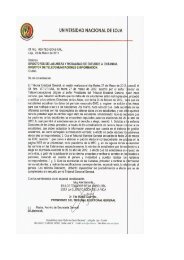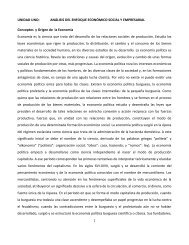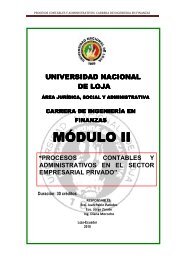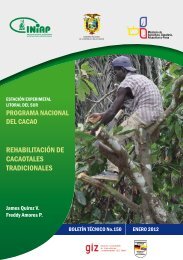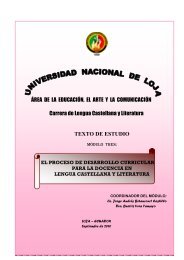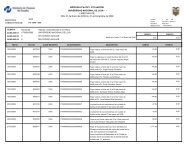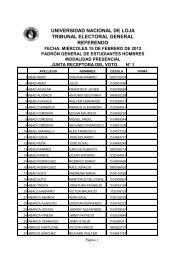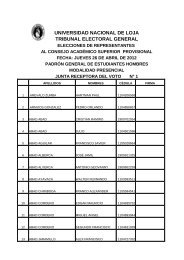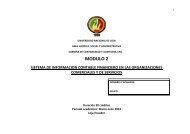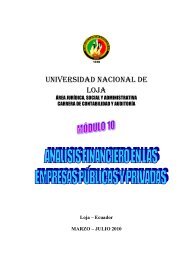module 5 planning of the english language teaching-learning process
module 5 planning of the english language teaching-learning process
module 5 planning of the english language teaching-learning process
Create successful ePaper yourself
Turn your PDF publications into a flip-book with our unique Google optimized e-Paper software.
UNIVERSIDAD NACIONAL DE LOJA<br />
Área de la Educación el Arte y la Comunicación<br />
English Language Career<br />
My Best Friend<br />
I going to tell you about my best Friend. Her name is Betty. She is tall and has<br />
got long hair dark. Her Favourite Food is chocolate and her Favourite drink is<br />
cola. Her hobbies are writting short stories and looking at TV. At <strong>the</strong> weekend<br />
we go shopping in <strong>the</strong> mall and meet our Friends. Its Fun!<br />
The teacher has used a correction code to indicate <strong>the</strong> types <strong>of</strong> mistakes in<br />
accuracy that <strong>the</strong> learner has made. This enables learners to make <strong>the</strong>ir own<br />
corrections. Here is an explanation <strong>of</strong> <strong>the</strong> letters and symbols:<br />
= word missing<br />
There is a word missing in <strong>the</strong> first line. The learner has written 'I<br />
going’ when it should be 'I am going'.<br />
= wrong word order<br />
There is a word order mistake in line 2. The sentence 'She is tall<br />
and has got long hair dark' should be 'She is tall and has got long<br />
dark hair'.<br />
= wrong spelling<br />
There is a spelling mistake in line 3. The word 'writting' should be<br />
'writing'.<br />
= wrong vocabulary<br />
There is a vocabulary mistake in line 4. The learner has used<br />
'looking at’ When <strong>the</strong> correct word is 'watching'.<br />
= punctuation (comma, full stop, etc.)<br />
The learner has used <strong>the</strong> wrong punctuation in line 5. The learner<br />
has written Its' when <strong>the</strong> correct version is 'It's'.<br />
O<strong>the</strong>r common categories in a correction code are:<br />
I/I = good sentence or expression<br />
|prep | = wrong preposition<br />
[A] = wrong agreement, for example She like<br />
? Ask me (I don't understand)<br />
T wrong verb tense t<br />
/ too many words<br />
It makes learners lose motivation if we correct every mistake <strong>the</strong>y make. We<br />
need to make sure our corrections are appropriate for <strong>the</strong> level and <strong>learning</strong><br />
style <strong>of</strong> <strong>the</strong> learner and for <strong>the</strong> focus <strong>of</strong> <strong>the</strong> task.<br />
• Key concepts and <strong>the</strong> <strong>language</strong> <strong>teaching</strong> classroom<br />
• There are different reasons for <strong>the</strong> mistakes that learners make. For example:<br />
[Escribir texto] Página 97



